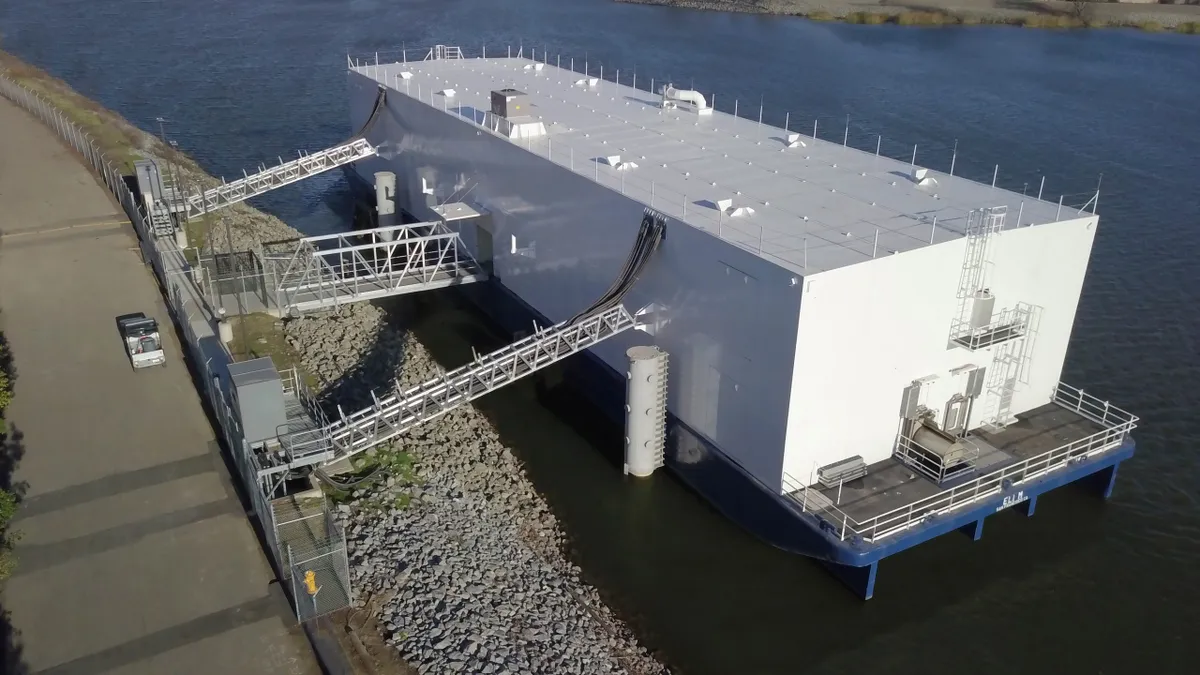U.S. utilities have a lot of reasons to be skeptical of plug-in electric vehicles (PEVs).
Take the lack of finance structures for compensating car owners who pass electricity back to the grid. Then take the lack of protective technology to prevent massive plug-ins from overloading transformers. And don't forget the fact that only 116,000 highway-capable PEVs have been sold in the U.S. since 2008, far behind President Obama's projection of 1 million electric cars on the road by 2015. It's easy to see why utilities don't feel a sense of urgency to hitch their business strategies to the technology.
But other utilities remain undaunted—in fact, some of the country's biggest utilities are preparing for the widespread use of electric vehicles, and their game plans are worth paying attention to.
On Monday, New Jersey's PSEG opened the largest PEV charging station in the state so that PEV-owning employees and the utility can further assess the electric car experience. Virginia-based Dominion is also leading the PEV charge, becoming one of the first 48 companies in the U.S. to join the U.S. Department of Energy's Workplace Charging Challenge on July 2.
Adding to these efforts are a growing cadre of utilities reaping increasingly significant rewards from investment in PEV technology, which is already having an impact on utility business models. Here are three striking examples:
1. NRG & PJM see PEVs as innovative approach to energy storage
In April, NRG Energy Inc—in partnership with the University of Delaware—announced that for the first time, its eV2g project sold power from electric cars to the power grid. Now being developed in the PJM Interconnection as an official resource, eV2g aggregates power from many electric cars, thereby producing one bigger power resource rather than individual, smaller ones. In turn, the PJM can use electric cars as energy storage which is helpful in balancing power from intermittent renewables. For example, energy storage from large-scale batteries in a fleet of vehicles can take the wind’s power generated at night when demand is low and store it to use when demand is higher.
Through a two-way interface between electric vehicles and the power grid, eV2g allows electric vehicle users to sell electricity back to the grid, charge their car, and provide mobile and stationary power to improve grid resiliency. The Princeton, New Jersey-based NRG has yet to commercialize the technology but eV2g marks a shift in the value of PEVs to the grid. And the positive press created by engaging with PEVs isn’t a bad bargain either.
2. Duke Energy invests in EV-charging station of the future
The largest utility in America is wasting no time when it comes to electric vehicles. Duke has partnered with Clemson University to develop and test a wireless charging technology that will overstep the need to plug-in altogether. The PluglessPower technology wirelessly sends electric currents to the electric car allowing drivers to ditch the charging cord and instead, use a recharging pad placed in a garage or parking space. Duke predicts the technology would accelerate mainstream PEV adoption and could hit the market later this decade.
In the meantime, Duke is providing 400 residential customers in the Carolinas and Indiana charging stations as a part of a pilot program launched in 2011. Through the program, Duke installs and maintains the stations and analyzes charging data to understand the impact of PEV charging on the grid, and how Duke can encourage customers to charge their cars during off-peak hours. Duke also has 187 charging stations installed in public and commercial spots in various states, in addition to 78 PEV charging stations for Duke’s fleet vehicles in Indiana, the Carolinas and Florida.
3. DTE discovering PEVs' effects on the grid
DTE Energy realizes timing is everything when it comes to charging electric cars and avoiding disruption to the grid. A study conducted by the Detroit-based utility found that multiple PEVs charging at once, and during peak times, can shorten transformer life and result in the increased risk of voltage dips, service interruption, and transformer failure, a June report by the American Council for an Energy-Efficient Economy reminds us.
Charging an all-electric vehicle with a Level-II charger, or 240 volt AC charging, requires an electricity load larger than the average house, so a handful of all-electric cars charging on a distribution feeder could overwhelm the feeder and transformers. In contrast, when DTE conducted PEV charging at midnight, or off-peak, the utility found no transformer overloads.
Knowing this, utilities can create measures to better control how PEVs affect the grid. By imposing time-based electricity rates or tariffs that encourage PEV customers to charge their cars during off-peak hours, utilities can avoid the pitfalls of PEVs while reaping the benefits. For example, with car charging taking place during night-time hours when demand is low, PEVs can assist in filling “valleys” in the load curve by helping use existing generation capacity.
Increasing utilization of the generation fleet may reduce the average cost of electricity generation but utilities still have a long way to go before tapping this resource. Right now, only 6% of utilities provide special rates, or tariffs, customized for electric car charging.
Would you like to see more utility and energy news like this in your inbox on a daily basis? Subscribe to our Utility Dive email newsletter! You may also want to read Utility Dive's look at 4 secrets to keeping energy efficiency programs on track.
















